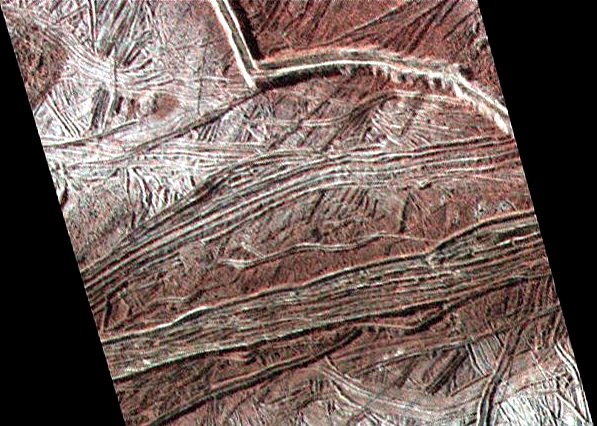
The search for life in the solar system took a step forward with the announcement that Europa, a moon of Jupiter first discovered by Galileo, shows signs of water geysers erupting from its south pole.
The new observations by the Hubble Space Telescope represent the best evidence yet that Europa, heated internally by the powerful tidal forces generated by Jupiter’s gravity, has a deep subsurface ocean. The hidden ocean has long been suspected, but scientists have never seen anything as dramatic and overt as plumes of water vapor more than 100 miles high.
If this finding holds up — the Hubble will look again, and scientists are racing to re-examine data gathered years ago by NASA’s Galileo probe — it could provide a major boost to a much-discussed but still unapproved NASA robotic mission to explore the icy moon that circles Jupiter every 3½ days.
“If there’s a geyser 200 kilometers tall, and you could fly a spacecraft through it and sample the water coming out from Europa, that would be phenomenal. What if there are organics in it? That’s getting to the question of ‘Are we alone in the universe?’ ” said John Grunsfeld, NASA’s top official for space science.
The discovery, detailed in a paper published Thursday online by the journal Science, was the subject of a news conference in San Francisco on Thursday at the fall meeting of the American Geophysical Union.
Since the 1980s, shortly after the Voyager probes first ventured to the outer planets, scientists have suspected that Europa has a global ocean, perhaps with more water than in all the oceans on Earth, hidden beneath a shell of ice.
The Galileo probe found the signature of a subsurface ocean through an analysis of Europa’s magnetic field. The surface ice of the moon has brown stains that could be the result of organic material snowing from the plumes, scientists said Thursday.
Late last year, a team of scientists — the lead author on the new paper is Lorenz Roth of the Southwest Research Institute, San Antonio — used the Hubble, and specifically an instrument repaired by Grunsfeld and a fellow astronaut in the final Hubble servicing mission, to take a closer look at Europa.
source : Seattle times

![20131213-035216[1]](https://coolinterestingnews.com/wp-content/uploads/2013/12/20131213-0352161.jpg)












